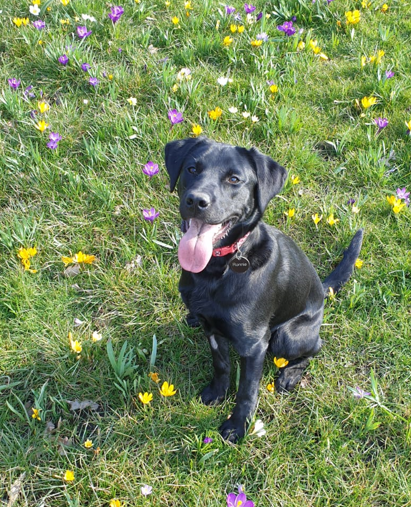As spring is now officially here, we can expect lighter evenings, warmer days and a colourful array of seasonal blooms. Many of us will have an added spring in our step, finding increased motivation for getting the house spick-and-span and spending more time outside.
Our pets will also relish the opportunity for more time playing in the garden, and we know there are plenty of benefits to enjoying the great outdoors, both mental and physical.
However, a new season also brings with it some hidden dangers that can pose a risk to our four-legged friends. PDSA Vet Nurse, Shauna Spooner, has shared some of the things pet owners should be aware of this spring.
Beware of toxic flowers
“Our pets are curious creatures, often keen to explore plants and trees, but some can be toxic, or even fatal, if eaten. Whatever the season, it’s important to be aware of the hidden hazards that some of the beautiful new blooms can pose for our pets. Types to watch out for during springtime include azaleas, daffodils, hyacinth, cotoneasters, geraniums, tulips and irises.
“For avid gardeners, installing fencing will help deter your four-legged friend from areas with lots of plants and bulbs – but be sure to still keep a close eye on them while they’re outside. If you spot your pet eating a potentially dangerous plant, or they suddenly become unwell after being in the garden, contact your vet as quickly as possible.
Spring clean with caution
“As well as enjoying the seasonal changes outdoors, you may find yourself spring cleaning your home too – but it’s important to keep four-legged friends away from any toxic products. Many household cleaners such as bleach, oven cleaner, dishwasher tablets and laundry detergents can be very dangerous for our pets – the harsh chemicals can cause burns to wandering paws and can even be fatal if ingested. The good news is that there are plenty of safer alternatives that are also kinder to the environment, such as baking soda, vinegar and lemon juice – using these will help you create a gleaming and fresh interior, while posing much less of a risk to your furry friend.
“If you do use stronger products, it’s essential to follow instructions and dilute where necessary. Wipe down floors and surfaces with fresh water after using chemicals to ensure your pet can walk around safely, and don’t forget to empty any mop buckets as soon as you’ve finished. Be sure to store products well out of reach – if your pet has mastered the art of opening door handles, it’s worth fitting a child-proof lock on your cleaning cupboard!
Keep Easter treats out of paws’ reach
“Humans aren’t the only ones tempted by a chocolatey treat or hot-cross bun – our pets can sniff them out even when concealed in packaging. Having chocolate in the house can pose a real danger to our precious pets – it contains a substance called theobromine, which can be life-threatening to animals if consumed.
“Signs of chocolate poisoning include excessive thirst, vomiting, a tender tummy, drooling and restlessness. These symptoms can worsen over time, affecting an animal’s heart rate, temperature and breathing. As well as chocolate treats, raisins, peanuts and coffee beans can also be a real danger. I’d always recommend storing chocolate in the same way you’d store medicine – well out of paws’ reach! If you want to give your pet a treat, offer a tasty low-fat snack such as a small piece of carrot. Alternatively, indulge in a new toy, a nice long walk or an extra-long playtime!”
For more information on keeping pets safe this spring, visit pdsa.org.uk/pet-help-and-advice/looking-after-your-pet/all-pets/pet-care-in-spring.




